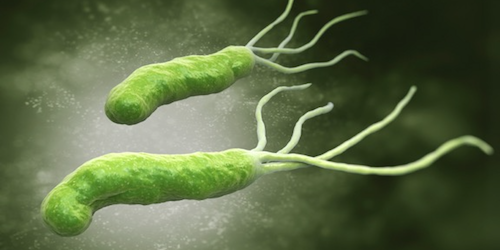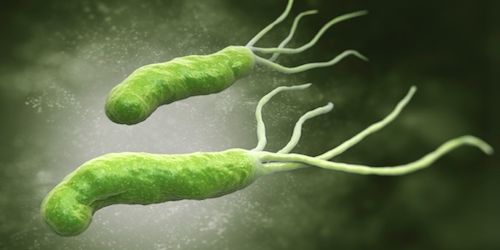Bacteria Create Own Swim Lane
Olympic swimmers wear swimsuits that reduce viscous drag, so they’d likely be jealous of Helicobacter pylori, a type of gut bacteria that releases chemicals to lower the resistance of the surrounding fluid. A new theoretical study combines diffusion and motility equations to determine the size of the easy-swimming zone formed by H. pylori.
The ulcer-causing H. pylori is one of the few organisms that can survive in the highly acidic environment of the stomach. It does so by secreting chemicals that neutralize the acid in the region around it. Recently, researchers discovered that this chemical buffer zone also helps the organism swim through the gel-like mucus covering the stomach lining. When neutralized, the mucus becomes less viscous as well as less elastic.
An important factor in describing H. pylori’s behavior is the size of the buffer zone, which has yet to be measured. In their motility model, Seyed Mirbagheri and Henry Fu from the University of Nevada, Reno, characterized H. pylori as a wriggling sheet moving in a pocket of normal (Newtonian) fluid surrounded by a stiff gel. They showed that the microbe’s speed depends on the size of the pocket. In a second analysis, they modeled the diffusion of neutralizing agents as H. pylori is moving. In order to make the two models consistent, the researchers found that the pocket must be around 40 micrometers, which is much larger than the bacteria cell. This modeling approach might be applied to other organisms (like E. coli) that may affect their environment in a way that benefits their motility.
This research is published in Physical Review Letters.
–Michael Schirber
Michael Schirber is a Corresponding Editor for Physics based in Lyon, France.





